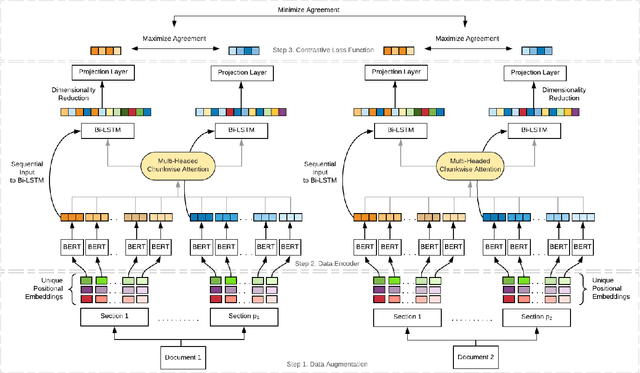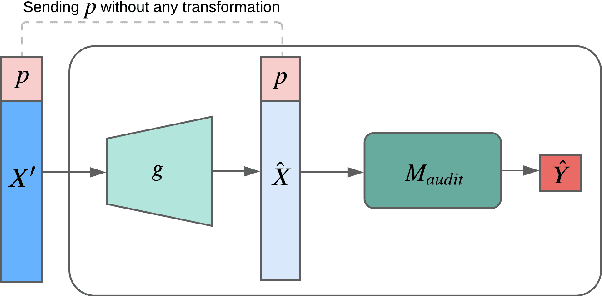Akshita Jha
Reasoning Towards Fairness: Mitigating Bias in Language Models through Reasoning-Guided Fine-Tuning
Apr 09, 2025Abstract:Recent advances in large-scale generative language models have shown that reasoning capabilities can significantly improve model performance across a variety of tasks. However, the impact of reasoning on a model's ability to mitigate stereotypical responses remains largely underexplored. In this work, we investigate the crucial relationship between a model's reasoning ability and fairness, and ask whether improved reasoning capabilities can mitigate harmful stereotypical responses, especially those arising due to shallow or flawed reasoning. We conduct a comprehensive evaluation of multiple open-source LLMs, and find that larger models with stronger reasoning abilities exhibit substantially lower stereotypical bias on existing fairness benchmarks. Building on this insight, we introduce ReGiFT -- Reasoning Guided Fine-Tuning, a novel approach that extracts structured reasoning traces from advanced reasoning models and infuses them into models that lack such capabilities. We use only general-purpose reasoning and do not require any fairness-specific supervision for bias mitigation. Notably, we see that models fine-tuned using ReGiFT not only improve fairness relative to their non-reasoning counterparts but also outperform advanced reasoning models on fairness benchmarks. We also analyze how variations in the correctness of the reasoning traces and their length influence model fairness and their overall performance. Our findings highlight that enhancing reasoning capabilities is an effective, fairness-agnostic strategy for mitigating stereotypical bias caused by reasoning flaws.
Biased or Flawed? Mitigating Stereotypes in Generative Language Models by Addressing Task-Specific Flaws
Dec 16, 2024Abstract:Recent studies have shown that generative language models often reflect and amplify societal biases in their outputs. However, these studies frequently conflate observed biases with other task-specific shortcomings, such as comprehension failure. For example, when a model misinterprets a text and produces a response that reinforces a stereotype, it becomes difficult to determine whether the issue arises from inherent bias or from a misunderstanding of the given content. In this paper, we conduct a multi-faceted evaluation that distinctly disentangles bias from flaws within the reading comprehension task. We propose a targeted stereotype mitigation framework that implicitly mitigates observed stereotypes in generative models through instruction-tuning on general-purpose datasets. We reduce stereotypical outputs by over 60% across multiple dimensions -- including nationality, age, gender, disability, and physical appearance -- by addressing comprehension-based failures, and without relying on explicit debiasing techniques. We evaluate several state-of-the-art generative models to demonstrate the effectiveness of our approach while maintaining the overall utility. Our findings highlight the need to critically disentangle the concept of `bias' from other types of errors to build more targeted and effective mitigation strategies. CONTENT WARNING: Some examples contain offensive stereotypes.
Beyond the Surface: A Global-Scale Analysis of Visual Stereotypes in Text-to-Image Generation
Jan 12, 2024



Abstract:Recent studies have highlighted the issue of stereotypical depictions for people of different identity groups in Text-to-Image (T2I) model generations. However, these existing approaches have several key limitations, including a noticeable lack of coverage of global identity groups in their evaluation, and the range of their associated stereotypes. Additionally, they often lack a critical distinction between inherently visual stereotypes, such as `underweight' or `sombrero', and culturally dependent stereotypes like `attractive' or `terrorist'. In this work, we address these limitations with a multifaceted approach that leverages existing textual resources to ground our evaluation of geo-cultural stereotypes in the generated images from T2I models. We employ existing stereotype benchmarks to identify and evaluate visual stereotypes at a global scale, spanning 135 nationality-based identity groups. We demonstrate that stereotypical attributes are thrice as likely to be present in images of these identities as compared to other attributes. We further investigate how disparately offensive the depictions of generated images are for different nationalities. Finally, through a detailed case study, we reveal how the 'default' representations of all identity groups have a stereotypical appearance. Moreover, for the Global South, images across different attributes are visually similar, even when explicitly prompted otherwise. CONTENT WARNING: Some examples may contain offensive stereotypes.
SeeGULL: A Stereotype Benchmark with Broad Geo-Cultural Coverage Leveraging Generative Models
May 19, 2023Abstract:Stereotype benchmark datasets are crucial to detect and mitigate social stereotypes about groups of people in NLP models. However, existing datasets are limited in size and coverage, and are largely restricted to stereotypes prevalent in the Western society. This is especially problematic as language technologies gain hold across the globe. To address this gap, we present SeeGULL, a broad-coverage stereotype dataset, built by utilizing generative capabilities of large language models such as PaLM, and GPT-3, and leveraging a globally diverse rater pool to validate the prevalence of those stereotypes in society. SeeGULL is in English, and contains stereotypes about identity groups spanning 178 countries across 8 different geo-political regions across 6 continents, as well as state-level identities within the US and India. We also include fine-grained offensiveness scores for different stereotypes and demonstrate their global disparities. Furthermore, we include comparative annotations about the same groups by annotators living in the region vs. those that are based in North America, and demonstrate that within-region stereotypes about groups differ from those prevalent in North America. CONTENT WARNING: This paper contains stereotype examples that may be offensive.
Transformer-based Models for Long-Form Document Matching: Challenges and Empirical Analysis
Feb 07, 2023Abstract:Recent advances in the area of long document matching have primarily focused on using transformer-based models for long document encoding and matching. There are two primary challenges associated with these models. Firstly, the performance gain provided by transformer-based models comes at a steep cost - both in terms of the required training time and the resource (memory and energy) consumption. The second major limitation is their inability to handle more than a pre-defined input token length at a time. In this work, we empirically demonstrate the effectiveness of simple neural models (such as feed-forward networks, and CNNs) and simple embeddings (like GloVe, and Paragraph Vector) over transformer-based models on the task of document matching. We show that simple models outperform the more complex BERT-based models while taking significantly less training time, energy, and memory. The simple models are also more robust to variations in document length and text perturbations.
CodeAttack: Code-based Adversarial Attacks for Pre-Trained Programming Language Models
May 31, 2022



Abstract:Pre-trained programming language (PL) models (such as CodeT5, CodeBERT, GraphCodeBERT, etc.,) have the potential to automate software engineering tasks involving code understanding and code generation. However, these models are not robust to changes in the input and thus, are potentially susceptible to adversarial attacks. We propose, CodeAttack, a simple yet effective black-box attack model that uses code structure to generate imperceptible, effective, and minimally perturbed adversarial code samples. We demonstrate the vulnerabilities of the state-of-the-art PL models to code-specific adversarial attacks. We evaluate the transferability of CodeAttack on several code-code (translation and repair) and code-NL (summarization) tasks across different programming languages. CodeAttack outperforms state-of-the-art adversarial NLP attack models to achieve the best overall performance while being more efficient and imperceptible.
Supervised Contrastive Learning for Interpretable Long Document Comparison
Aug 20, 2021



Abstract:Recent advancements in deep learning techniques have transformed the area of semantic text matching. However, most of the state-of-the-art models are designed to operate with short documents such as tweets, user reviews, comments, etc., and have fundamental limitations when applied to long-form documents such as scientific papers, legal documents, and patents. When handling such long documents, there are three primary challenges: (i) The presence of different contexts for the same word throughout the document, (ii) Small sections of contextually similar text between two documents, but dissimilar text in the remaining parts -- this defies the basic understanding of "similarity", and (iii) The coarse nature of a single global similarity measure which fails to capture the heterogeneity of the document content. In this paper, we describe CoLDE: Contrastive Long Document Encoder -- a transformer-based framework that addresses these challenges and allows for interpretable comparisons of long documents. CoLDE uses unique positional embeddings and a multi-headed chunkwise attention layer in conjunction with a contrastive learning framework to capture similarity at three different levels: (i) high-level similarity scores between a pair of documents, (ii) similarity scores between different sections within and across documents, and (iii) similarity scores between different chunks in the same document and also other documents. These fine-grained similarity scores aid in better interpretability. We evaluate CoLDE on three long document datasets namely, ACL Anthology publications, Wikipedia articles, and USPTO patents. Besides outperforming the state-of-the-art methods on the document comparison task, CoLDE also proves interpretable and robust to changes in document length and text perturbations.
Fair Representation Learning using Interpolation Enabled Disentanglement
Jul 31, 2021



Abstract:With the growing interest in the machine learning community to solve real-world problems, it has become crucial to uncover the hidden reasoning behind their decisions by focusing on the fairness and auditing the predictions made by these black-box models. In this paper, we propose a novel method to address two key issues: (a) Can we simultaneously learn fair disentangled representations while ensuring the utility of the learned representation for downstream tasks, and (b)Can we provide theoretical insights into when the proposed approach will be both fair and accurate. To address the former, we propose the method FRIED, Fair Representation learning using Interpolation Enabled Disentanglement. In our architecture, by imposing a critic-based adversarial framework, we enforce the interpolated points in the latent space to be more realistic. This helps in capturing the data manifold effectively and enhances the utility of the learned representation for downstream prediction tasks. We address the latter question by developing a theory on fairness-accuracy trade-offs using classifier-based conditional mutual information estimation. We demonstrate the effectiveness of FRIED on datasets of different modalities - tabular, text, and image datasets. We observe that the representations learned by FRIED are overall fairer in comparison to existing baselines and also accurate for downstream prediction tasks. Additionally, we evaluate FRIED on a real-world healthcare claims dataset where we conduct an expert aided model auditing study providing useful insights into opioid ad-diction patterns.
 Add to Chrome
Add to Chrome Add to Firefox
Add to Firefox Add to Edge
Add to Edge